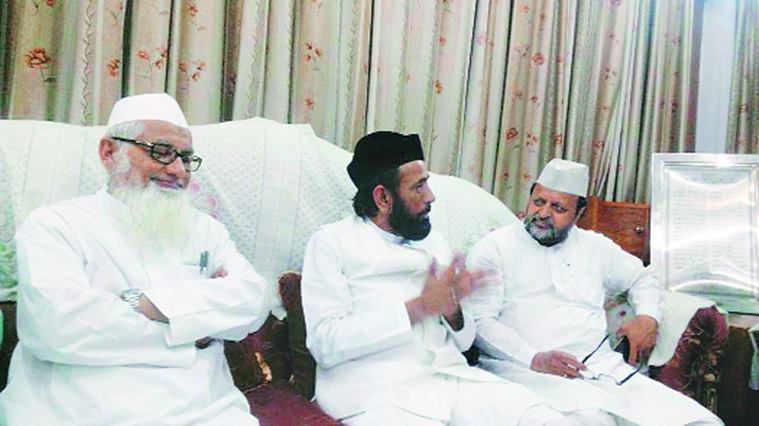Excitement About Barelvi
Wiki Article
Some Of Barelvi
Table of ContentsGetting My Barelvi To WorkBarelvi Fundamentals ExplainedExcitement About BarelviBarelvi - Questions
Radical Islamist teams in South Asia such as the Taliban are commonly categorized as Wahhabis, coming from the ascetic, puritanical kind of Islam institutionalized in Saudi Arabia. But while the connections between the Wahhabis and the Taliban are tight, the latter really belong to a different branch of the belief.Sunni Islam is split into four orthodox institutions of legislation (Madhhabs), each of which is adhered to in distinctive components of the Muslim globe. A variety of ceremonies and also petition kinds also vary among the institutions. As the map over indicates, Wahhabism, based in Saudi Arabia, is associated with Hanbali law, the strictest kind of Islamic jurisprudence.

" Sunni Muslims," Haqqani composes, have actually cast aside their aversion to Wahhabi groups, producing a a great deal of conventional Sunnis that welcome Wahhabi political and also jihadi ideas without necessarily surrendering their ceremonies and also routines." As is typically kept in mind, Saudi Arabian spiritual financing has helped break down the obstacles in between both sects.
The 7-Second Trick For Barelvi
Mapping the four standard institutions of Sunni Islamic regulation is relatively very easy, although the writers of the Wikipdia map posted over are worthy of recommendation for doing a specifically excellent task. But the distinctions that actually issue are not those of Madhhab, yet instead are discovered among less formal and also far more current "motions" within Islamic thought and practice.The Deobandi movement is aligned with Wahhabism as well as advances an equally severe, puritanical analysis of Islam. The Barelvi activity, in contrast, defends an extra typical South Asian variation of the confidence centered on the practices of Sufi necromancy. In India as well as especially Pakistan, stress between both groups can be extreme, occasionally verging on open war.
As just recently reported in the, "When the Taliban took control of Buner in April 2009, they first besieged Pir Baba's temple. Taliban leader Fateh Khan stated it was because the area was a hub of 'infidelity as well as idolatry.'" As a result, several Sufi shrines are now greatly safeguarded by Pakistani safety and security forces.
One can, however, quickly portray their area of beginning, as both movements are called for towns in north India: Deoband and Bareilli. Although extreme Deobandi groups are most closely connected with Pakistan and Afghanistan, the motion's intellectual and you can find out more spiritual heart is still the Indian city of Deoband. Its Darul Uloom Deoband is reputed to be the second largest madrasah (religious school) in the Sunni Muslim world, following only Al-Ahzar in Cairo.
The Definitive Guide for Barelvi
Firm numbers are difficult to discover, a lot of professionals maintain that Barelvis considerably out-number Deobandis not simply among Indian Muslims but in Pakistan., "some 15 per cent of Pakistan's Sunni Muslims would certainly consider themselves Deobandi, and also some 60 per cent are in the Barelvi tradition.Early Deobandi leaders were distressed by the accomplishment of British colonialism find here as well as English-language education, which they sought to battle by detoxifying their religious beliefs, removing mystical techniques as well as other technologies that they considered as as opposed to the faith (Barelvi). One of the most hardline Deobandis pertained to concern Barelvis, as well as Shiites, as non-Muslim challengers deserving of assault.
Deobandi thinking is also standard to be nationalistic, regarding the community of the faithful, not the modern-day nation-state, as the appropriate Quranic political car. Most Deobandi scholars denied the dividers of British India in 1947, preferring to look for the spread of Islam in a wholehearted India. The idea of Pakistan, moreover, was initially welcomed by Muslim teams hated by the hardline Deobandis (Barelvi).
As an outcome, the Pakistani government progressively drifted in the direction of the extreme Deobandi movement. The connection, nonetheless, is a two-edged sword for modern Pakistan, as the Deobandi faithful eventually have contempt for national identities and also boundaries.
The Main Principles Of Barelvi
Movie critics link it to terrorist organizations; the Taliban, after all, sprang out of Deobandi madrasahs in Learn More northeastern Pakistan, as did several other violence-prone companies. Horrendous fatwas (religious rulings) do not help its credibility. In May 2010, a mandate that ladies can not benefit salaries shocked mainstream Muslim opinion worldwide. (The described it as a "Talibanesque fatwa that stank of tribal patriarchy.") A lot more unpleasant was the 2006 "fatwas for cash money" bribery rumor, which was disclosed by an Indian television sting operation.
As Abedin composes: On the inquiry of supposed Wahabism I put it to Madrassi that many movie critics of the Deoband seminary claim that Deobandi ideas are just a small step far from full-blown Wahabism. In reaction the replacement Vice Chancellor makes a clear separation in between the two institutions of thought, prior to including that if we consider the Wahabis as well as the Barelvis as 2 extremes, the Deobandis inhabit the centre ground in that continuum.
Report this wiki page